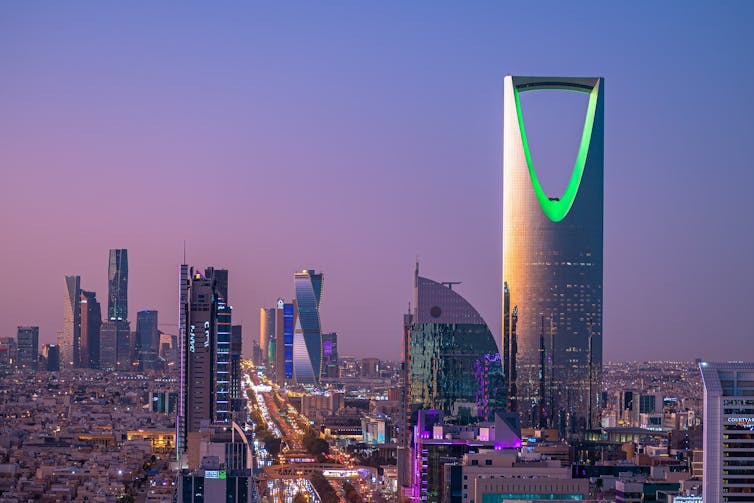Not every US president gets a free private jet, but the Gulf states have boosted US economic dominance for decades
- Written by Adam Hanieh, Professor of Political Economy and Global Development, Institute of Arab and Islamic Studies, University of Exeter

After signing a US$142 billion (£107 billion) arms deal[1] with Saudi Arabia, Donald Trump said the US bond with that country was “more powerful than ever”[2]. He was also reportedly quite pleased with the gift of a private jet[3] from Qatar.
But these arrangements are just the latest developments in a long history of the Gulf monarchies supporting the architecture of American global power. And while the six Gulf states (Saudi Arabia, United Arab Emirates, Kuwait, Qatar, Bahrain and Oman) have recently started redirecting their energy and trade ties eastward[4], especially towards China, they remain deeply embedded in the US-led financial order.
As I explore in my recent book, Crude Capitalism[5], the Gulf states were instrumental in the rise of American global economic dominance.
With oil emerging as the dominant fossil fuel through the second half of the 20th century, the Gulf’s nationalised petroleum industries generated vast amounts of income. Much of this was invested back into the US financial markets, particularly treasury bonds (essentially a long-term loan to the US government). This gave the US access to cheap foreign capital and reinforced the global dominance of the dollar.
Put simply, the Gulf states were not peripheral to the US’s growing financial power – they were an essential contributor.
The US supplies the overwhelming majority of these weapons. In this way, Gulf spending supports the American military industry, and in return, these states become more closely tied to the US military’s umbrella.
These deep military, financial and strategic ties help explain the real focus of Trump’s visit to the Gulf. Much of the discussion will have centred on massive investment pledges made by Gulf states to the US – including Saudi Arabia’s promise to invest up to US$600 billion[16], and the UAE’s commitment[17] to a US$1.4 trillion investment over ten years.
And such pledges reflect a broader agenda which involves expanding deals in artificial intelligence, critical minerals[18], energy infrastructure and advanced manufacturing.
So Trump travelling to the region is not just about private jets and spectacle. It is about the continuing relevance of a structural relationship essential to American power, and a deepening financial integration between the Gulf and the US.
For even as the Gulf reorients its energy flows eastward, it remains deeply tied to US finance, the US military industry and US assets. In an era of weakening US global power – and the possible spectre of a deeper clash with China – this is what will define Trump’s visit.
References
- ^ arms deal (www.bbc.co.uk)
- ^ “more powerful than ever” (www.bbc.co.uk)
- ^ gift of a private jet (www.theguardian.com)
- ^ eastward (www.tni.org)
- ^ Crude Capitalism (www.versobooks.com)
- ^ Sign up to our daily newsletter (theconversation.com)
- ^ deep alignment (www.cfr.org)
- ^ China was responsible (comtradeplus.un.org)
- ^ recently overtaken (www.ft.com)
- ^ US$800 billion (data.worldbank.org)
- ^ manage (economymiddleeast.com)
- ^ US$2.8 trillion (gfmag.com)
- ^ Treasury data (home.treasury.gov)
- ^ Stockholm International Peace Research Institute (www.sipri.org)
- ^ Kashif Hameed/Shutterstock (www.shutterstock.com)
- ^ US$600 billion (www.whitehouse.gov)
- ^ UAE’s commitment (ae.usembassy.gov)
- ^ critical minerals (www.reuters.com)







